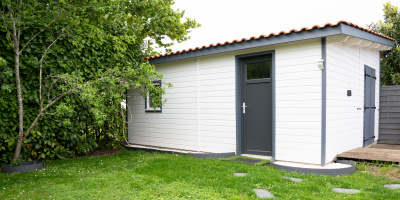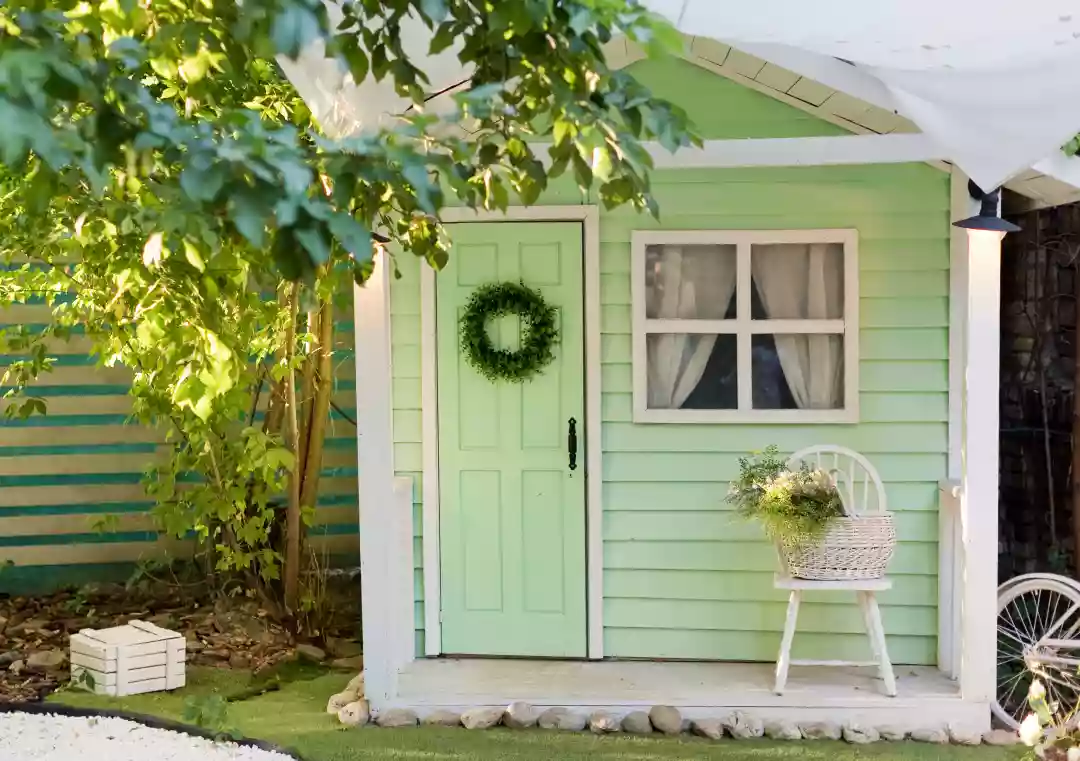Concrete Blocks
Concrete blocks are a versatile and cost-effective option for your shed foundation. It provides the stability required to support the heavier components of your shed. After all, these blocks can easily be moved and re-stacked, which can come in handy if you ever want to relocate your shed. Likewise, concrete blocks are easy to install and will require little effort to lay down the foundation bed.
If you decide to go with concrete blocks, you’ll need to flatten the surface by filling the blocks with sand or gravel. This ensures that a level base is laid for the shed. Additionally, it’s best if you use concrete blocks with hollow spaces so that you can fill them with mortar. This further strengthens the foundation and adds additional support to the shed's structure.
Gravel/Crushed Stone Pad
Gravel, also known as crushed stone, is another popular option for your shed foundation. As an inexpensive yet strong material, gravel is easily applied and highly effective at providing the desired support. However, unlike concrete blocks, this material requires a level surface in order to be placed correctly.
To ensure a level site for the shed, you will need to excavate the area first. Once that’s done, spread a layer of gravel first followed by compacting it down with a tamper. After that, apply additional layers of gravel until it's level with the surrounding ground. Keep in mind that you should aim for a depth of at least 12 inches to ensure the stability and strength of the foundation.

Need assistance finding garden sheds and buildings near you?
Get a QuotePost-and-Beam
This type of foundation is ideal for smaller structures such as garden sheds or storage units. Post-and-beam foundations consist of pressure-treated posts embedded deep into the ground and connected with beams. The posts act as pillars that bear the entire weight of the shed and keep it from shifting due to wind or other external forces.
When installing a post-and-beam foundation, it’s important to get the appropriate measurements for your shed and determine the exact number of posts needed. Likewise, you'll need to calculate the correct depth for the posts, depending on your area and soil type. If done correctly, a post-and-beam foundation can provide good anchorage and support for the shed for many years to come.
Concrete Foundation
A concrete foundation is perhaps the best way to provide long-term protection for your shed. A concrete floor can bear the weight of the shed, as well as the weight of any additional equipment that may be inside. Since it’s a permanent solution, a concrete foundation requires a lot of work and commitment.
To properly install a concrete foundation, you will need to dig a trench, pour the concrete, and let it cure for the recommended amount of time. After that, you should fill in any gaps and level the surface. Lastly, you should apply a sealer to protect the concrete food from water damage.
Pavers
Another great option for your shed foundation is pavers. Pavers are an excellent choice because they can be used on even, unleveled ground. Moreover, they are easy to install and require no special tools. You will only need to lay the pavers down on a bed of sand and level them off.
They are also less prone to shifting and settling over the years. On top of that, pavers are an attractive material and they can enhance the appearance of the shed. Additionally, you can pick whatever colour or design you like, making it a great way to customize the look of your shed.
Choosing the right foundation for your shed requires careful consideration. Each of the above shed foundation options has its own unique advantages and drawbacks. Consider your needs carefully before you make a final decision and opt for one that best suits your specific situation.
In this article:
